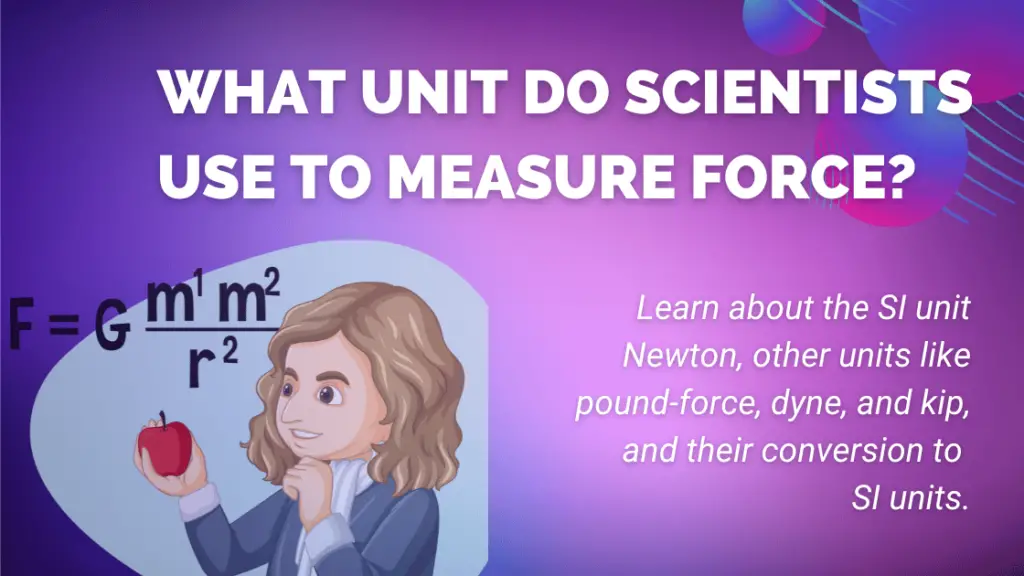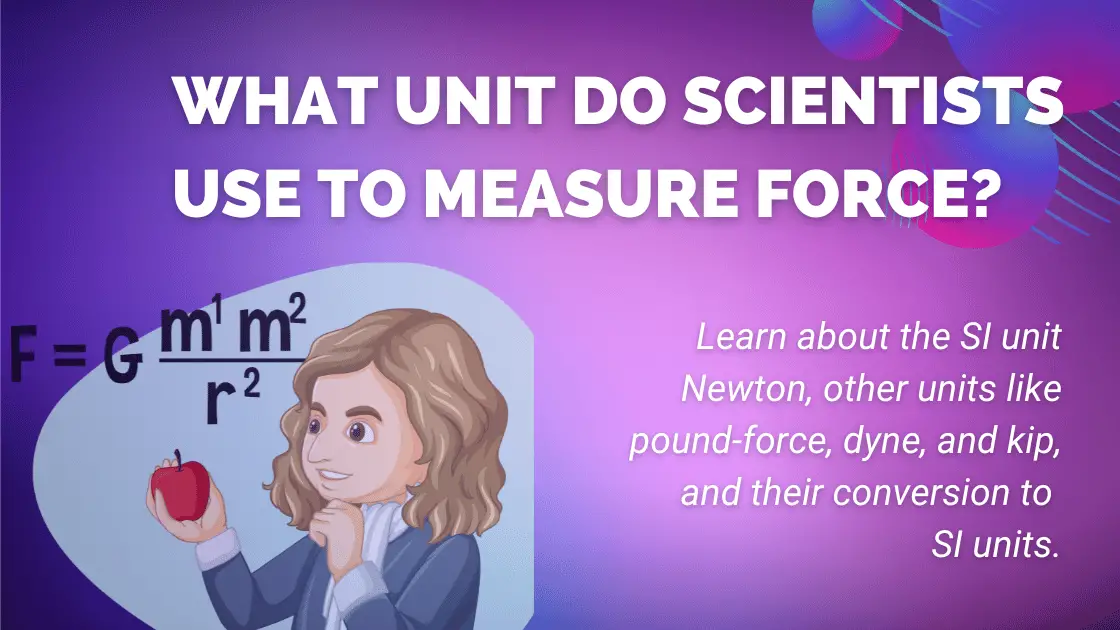Force is a fundamental concept in physics that describes the interaction between objects. When one object exerts a force on another object, it can result in the acceleration, deceleration, or deformation of the object. To quantitatively measure and analyze force, scientists use specific units.

What unit do scientists use to measure force?
The unit of force in the International System of Units (SI) is the Newton, abbreviated as “N”. A Newton is defined as the force required to accelerate a mass of one kilogram at a rate of one meter per second squared. Mathematically, this relationship is expressed by Newton’s second law of motion:
\[
F = ma
\]
Where \( F \) is the force in Newtons, \( m \) is the mass in kilograms, and \( a \) is the acceleration in meters per second squared.
In the British Imperial System, the unit used to measure force is the pound-force, denoted as “lbf.”
Newton (N)
Newton is the SI unit of force, defined as the force required to accelerate a one-kilogram mass by one meter per second squared (\(F=ma\)).
Pound-Force (lbf)
Pound-force is a unit of force used in the Imperial system, defined as the force exerted by one pound of mass in the gravitational field of Earth.
\[
1 \text{ lbf} = 4.448 \text{ N}
\]
Conversion Between Units
To convert between these units, the following conversion factor is commonly used:
\[
1 \text{ N} = 0.2248 \text{ lbf}
\]
Or conversely,
\[
1 \text{ lbf} = 4.448 \text{ N}
\]
You can convert from lbf to N using the formula \( F_{\text{N}} = 4.448 \times F_{\text{lbf}} \).
Other Units and Systems
In addition to Newton, pound-force, and dyne, there are other units for measuring force that are less commonly used or are applied in specialized contexts.
Kip
The kip is an American unit of force that equals 1,000 pound-forces. It is often used in civil and mechanical engineering for structural load calculations.
\[
1 \text{ kip} = 1000 \text{ lbf} = 4448.22 \text{ N}
\]
Poundal
The poundal is a unit in the foot-pound-second (FPS) system, commonly used in the United Kingdom. It is defined as the force necessary to accelerate a one-pound mass by one foot per second squared.
\[
1 \text{ poundal} = 0.138255 \text{ N}
\]
Ton-Force
In industrial contexts, force may be measured in tons-force, either metric or short tons, to describe large forces such as those exerted by hydraulic systems or machinery.
\[
1 \text{ metric ton-force} = 9806.65 \text{ N}
\]
\[
1 \text{ short ton-force} = 8896.44 \text{ N}
\]
Sthène
The sthène is a metric unit of force used in the field of gravimetry for measuring large forces. It is not an SI unit but is accepted for use with SI units.
\[
1 \text{ sthène} = 1000 \text{ N}
\]
Table of Units for Measuring Force and Their Conversion to SI Units
Below is a table that lists various units for measuring force and their conversion factors to the SI unit of force, which is the Newton (N).
| Unit | Abbreviation | Conversion to Newton (N) | Formula to Convert to Newtons (N) |
|---|---|---|---|
| Newton | N | 1 N | \(1 \text{ N} = 1 \text{ N}\) |
| Pound-Force | lbf | 4.448 N | \(1 \text{ lbf} = 4.448 \text{ N}\) |
| Dyne | dyn | \(1 \times 10^{-5}\) N | \(1 \text{ dyn} = 1 \times 10^{-5} \text{ N}\) |
| Kip | kip | 4448.22 N | \(1 \text{ kip} = 4448.22 \text{ N}\) |
| Poundal | pdl | 0.138255 N | \(1 \text{ pdl} = 0.138255 \text{ N}\) |
| Metric Ton-Force | tf (metric) | 9806.65 N | \(1 \text{ tf (metric)} = 9806.65 \text{ N}\) |
| Short Ton-Force | tf (short) | 8896.44 N | \(1 \text{ tf (short)} = 8896.44 \text{ N}\) |
| Sthène | sn | 1000 N | \(1 \text{ sn} = 1000 \text{ N}\) |
| Kilogram-Force | kgf | 9.80665 N | \(1 \text{ kgf} = 9.80665 \text{ N}\) |
Related Questions and Answers
Why is Newton the SI unit of force?
Newton is the SI unit of force because it is derived from the base SI units of mass, length, and time. This makes it compatible and consistent with a wide array of physical phenomena, facilitating accurate and standardized measurements.
What are the dimensions of force?
The dimensions of force are \([M L T^{-2}]\), where \(M\) stands for mass, \(L\) for length, and \(T\) for time.
What is the relationship between weight and force?
Weight is a specific type of force exerted on an object due to gravity. It is calculated as \( W = mg \), where \( m \) is the mass and \( g \) is the acceleration due to gravity.
Q: Why are there so many units for force?
Different units are used for specific applications or within particular historical or geographic contexts. For example, the poundal is primarily used in the UK, while the kip is more common in American engineering.

